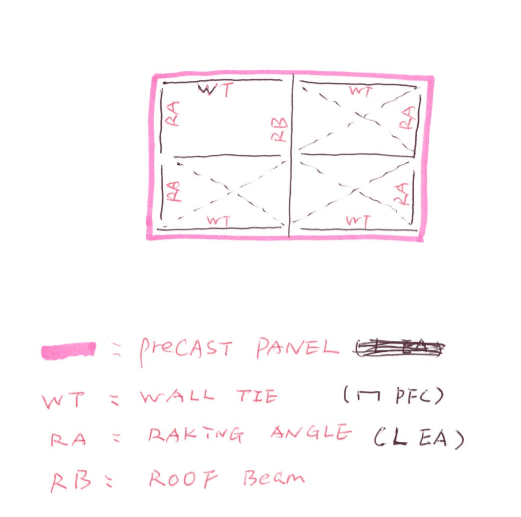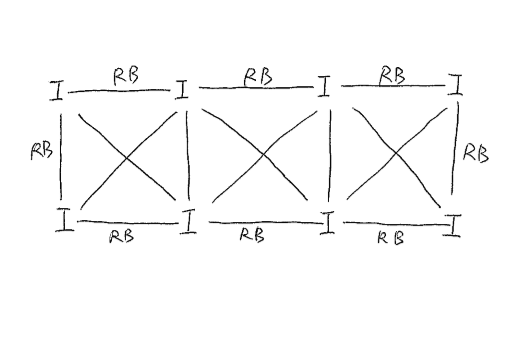JackEngTip
Structural
- Feb 19, 2019
- 14
Hello everyone,
I am relatively new to warehouse design and hope someone can help me regarding this.

Above is the scheme of structural plan.
My questions are:
1. What is wall tie (normally PFC in 90 degree axes angles) for? My understanding is to work as a tie in 'strut & tie wind truss' to resist wind load. But why don't we put wall tie in orthogonal grid? instead we put racking angles (normally EA) with bolts to precast concrete panels? I undertstand racking angles can work to carry purlins but dont we need tie to resist wind in orthogonal direction as well? How can EA with botls to panel work as tie? If this is possible why dont we simply use racking angles all around?
2. How does wind load get distributed? I would say in this case wind goes to base and roof (the panel work as a one-way slab that runs vertically). But cant the wind load be transfer horizontally and then goes to other panels at ends, which have great in-plane capacity so we can get rid of wall ties and the like?
3. How about a structure like this?

portal columns and glasses between columns. Do I apply the wind load as line load on columns or roof beams and why? If wind applies on roof beam does that mean noramlly UB should be avoid for roof beams due to the laterally deflection in beams? What kind of section do you normally use? SHS?
Thank you very much.
I am relatively new to warehouse design and hope someone can help me regarding this.

Above is the scheme of structural plan.
My questions are:
1. What is wall tie (normally PFC in 90 degree axes angles) for? My understanding is to work as a tie in 'strut & tie wind truss' to resist wind load. But why don't we put wall tie in orthogonal grid? instead we put racking angles (normally EA) with bolts to precast concrete panels? I undertstand racking angles can work to carry purlins but dont we need tie to resist wind in orthogonal direction as well? How can EA with botls to panel work as tie? If this is possible why dont we simply use racking angles all around?
2. How does wind load get distributed? I would say in this case wind goes to base and roof (the panel work as a one-way slab that runs vertically). But cant the wind load be transfer horizontally and then goes to other panels at ends, which have great in-plane capacity so we can get rid of wall ties and the like?
3. How about a structure like this?

portal columns and glasses between columns. Do I apply the wind load as line load on columns or roof beams and why? If wind applies on roof beam does that mean noramlly UB should be avoid for roof beams due to the laterally deflection in beams? What kind of section do you normally use? SHS?
Thank you very much.
